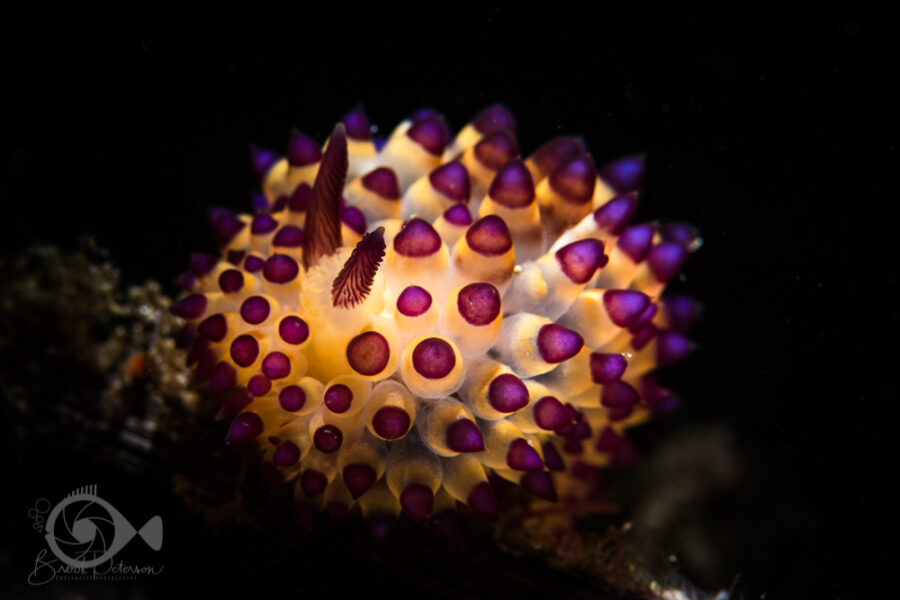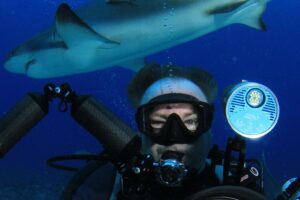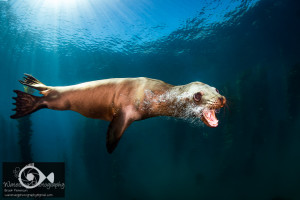
As I back-rolled off the banca into the comfortable waters of Anilao, my mind conjured up images of beautiful coral gardens, colorful fish, and turtles lazily basking in the sun-drenched sea. This was my first experience in the Philippines, and my expectations were high. I wanted a once in a lifetime experience, but little did I know that I was about to have a life-changing experience.
Anilao is arguably one of the best destinations in the world to experience a diverse variety of small critters. It occupies a portion of the Calumpan Peninsula about a two-and-a-half-hour drive from Manila. The Verde Island Passage is near the Balayan Bay on the North of the peninsula and the Batangas Bay on the South. Because of this, tidal forces supply huge quantities of nutrient rich water to the area, along with plankton and larval animals from as far away as Papua New Guinea. It seemed like the perfect choice for a dive vacation.
Before I entered the water, the guide explained our dive plan. We would descend in about 20 meters of water then follow a zig-zag pattern uphill until we had reached our time limit. Donning my mask, I looked down from the surface and found that I could see nothing. No bottom, no beautiful coral, just hazy blue-gray water. I continued to sink into the sea, and soon found that a shadowy gray bottom was coming to greet me. To my great disappointment, there were just a few scattered coral bommies on a vast muck-gray bottom.

I had heard of muck diving and had done enough research to know that the animals in this area would be small. But I wasn’t really prepared for what I would see. Vast expanses of sand and silt and dead looking rubble seemed devoid of life in my eyes and I began to feel that I had made a serious error in judgement by choosing this destination. Nevertheless, I dutifully followed the guide to one of the bommies where he began to pick through some debris that had accumulated around it. Within minutes he was motioning for me to come look. He pointed to a rock. I looked at the rock, then at him, thinking maybe I was missing something. Again, he pointed to the rock, then held the back of his hand to his forehead with his index finger crooked. I shrugged and started to turn away. The guide signaled to me again to look, so I decided to humor him, even though I had no interest in the rock. But then the rock moved. Ever so slowly my eyes began to understand that I was not seeing a rock, but a frog fish. Suddenly the “rock” became very interesting and I watched as it used its lure to attract a small fish.

I would soon learn how dependent I was upon the dive guides expertise. The guides in Anilao are not just dive masters who lead a group along a pre-determined path. They are highly trained individuals who have experience locating interesting subjects for their clients. They know where to look for certain types of animals and will see things that the average diver can not even fathom. They have standard hand signals for common animals and it is valuable to become familiar with them. My guide showed me a tiny speck of algae in the water which made me think he was crazy. But I took a few shots with my camera and later discovered he was showing me a hairy shrimp. I truly thought it was nothing but sea dust until I spotted its tiny legs and eye through my camera’s lens.

With my new eyes, I began to look closer at the small clumps of coral and debris scattered in the fine sand. There were large flat anemones full of porcelain crabs and clownfish. Nudibranchs and shrimp were living among the debris, and a small eel watched me from his den. By the end of an hour I had seen more living critters in one dive than I had ever seen before and all of them were new to me. What had started as a disappointing dive turned out to be one of the most exciting I had experienced to date.

The next dive started out similarly, only this time I was prepared for a featureless sea floor. I was not disappointed. The sea floor was covered with broken dead coral and other rubble. At first, it was all I could see, but then my eyes began to adjust to the small animals living amongst the debris. There were nudibranchs of all sizes and colors. Seahorses and tiny pipefish clung to twigs and even the animals had animals on them. Bubble coral heads were host to all kinds of delicate shrimp, mushroom coral heads had mushroom coral pipefish darting around the tentacles, and fire urchins had Coleman shrimp and tiger crabs riding on their back. I have since learned how important it is to become acquainted with the symbiotic relationships that many small sea critters have with one another. Knowing that whip corals are home to whip coral shrimp and gobies has helped me to find these animals on my own. Likewise, learning that sea cucumbers are host to a variety of shrimp and crabs has led me to discover these critters.

A brilliant sunset marked the end of an exciting day, but little did I know that the best was yet to come. As this was one of my first dive trips, I had very limited experience diving at night. Anilao is well known for a dive site at Anilao Pier. Here the water is only five or six meters deep. The bottom is sandy and during the day, a diver might only see a few small fish. But once the sun sets the sand transforms into a living and breathing entity. Octopus begin to emerge from hidden dens. They are on the hunt but appear playful and will entertain divers for hours if given a shell or a discarded jar.


The sand yields other interesting treasures as well. The Bobbit worm, a strange and creepy looking worm with powerful jaws bobs up out of the sand to catch fish. Crabs, snails, shrimp and sand dwelling flatworms creep out of their hiding places to feed. Frogfish appear, reef squid occupy the space just above the sand, and stargazers bury themselves just under the sand. Because of the shallow depth, a diver could easily spend two hours there and never see everything the site has to offer.

After a day filled with so many new finds, I discovered I was hooked on muck diving. I have explored the many sites around Anilao hundreds of times, visited Lembeh and Bali, Indonesia, Romblon Philippines and many other muck sites around the world. Each time I am awed by the animals I see and the behaviors they exhibit. Muck diving has shaped the way I travel and the destinations I choose. It has inspired a love of discovery in me as each site has something new to offer. I look forward to mucking around in Anilao as though it provides me with my life’s blood, as indeed, muck diving has fostered a deep appreciation in my heart for the wee beasties that live in the muck.

This feature article was published in November 2018 in Asian Diver Magazine. For more great articles visit https://www.uw360.asia
Subscribe now!
As always, if you enjoy my images please visit my website, waterdogphotography.com, or give me a like on Facebook at Waterdog Photography Brook Peterson. Don’t forget to follow me here at waterdogphotographyblog and please feel free to share on Facebook or other social media.
My photographs are taken with a Nikon D810 in Sea and Sea Housing using two YS-D2 Strobes.
All images and content are copyrighted by Brook Peterson and may only be used with written permission. Please do not copy or print them. To discuss terms for using these images, please contact me.
copyright Brook Peterson 2018





